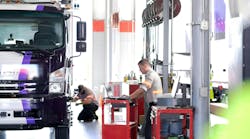Newly released census data on U.S. commuting trends show that Americans are as dependent as ever on their cars and that the federal government should make real traffic congestion relief a national priority, according to the American Highway Users Alliance.
“Despite recent claims from some pro-transit groups that Americans are getting out of their vehicles in record numbers, the census shows that even more commuters are traveling to and from work in their cars, trucks and SUVs,” said William D. Fay, AHUA president & CEO. The group wants the federal government to make congestion relief a national priority, starting by improving traffic flow at the nation’s worst bottlenecks.
“The latest census found that an even greater share of commuters is driving to work alone, while the percentage of commuters taking transit, carpooling, or walking has actually declined during the past decade,” he added. “The census data highlight that about the only thing to change for commuters since 1990 is the unfortunate fact that they're stuck in ever worsening congestion.”
AHUA said the amount of time the average American spent commuting increased nearly four minutes per day during the past decade, from 22.4 minutes per commute trip in 1990 to 24.3 in 2000. In a 1999 study conducted by the research firm Cambridge Systematics found that improving traffic flow at the 167 worst highway choke points around the country would, over a 20-year span, prevent nearly 290,000 crashes. It would also cut carbon monoxide by emissions 45%, reduce smog-causing volatile organic compounds by 44% and save nearly one billion gallons of fuel each year.


